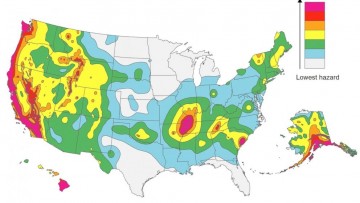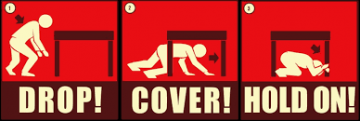Earthquake Preparedness
Earthquakes

An earthquake is the result of a sudden release of energy in the Earth’s crust that creates seismic waves. San Francisco’s history, geography, and probability for future tremors make earthquakes a significant hazard for our city.
Quick Tips:

- Drop, cover, and hold on when the ground starts shaking.
- If you are inside, drop to the ground, take cover under a sturdy table or other piece of furniture, and hold on until the shaking stops.
- If a sturdy table or desk is not available, cover your face and head with your arms and crouch in an inside corner of the room.
- Stay away from glass, windows, outside doors and walls, and anything that could fall on you, such as lighting fixtures or furniture.
- Stay inside until the shaking stops and it is safe to go outside. Do not exit a building during shaking.
- If you are outdoors, move away from buildings, streetlights, and utility wires.
- If you are in a moving vehicle, stop as quickly as safety permits and stay inside the vehicle. Avoid stopping near or under buildings, trees, overpasses, and utility wires.
- Once the shaking stops, proceed with caution; avoid roads, overpasses, bridges, or ramps until you know they are safe.
Before an Earthquake
Step 1: Secure your space by identifying hazards and securing movable items.
Step 2: Plan to be safe by creating a disaster plan and deciding how you will communicate in an emergency.
Step 3: Organize disaster supplies in convenient locations.
Step 4: Minimize financial hardship by organizing important documents, strengthening your property, and considering insurance.
During an Earthquake
Step 5: Drop, Cover, and Hold On when the earth shakes.
Step 6: Improve safety after earthquakes by evacuating if necessary, helping the injured, and preventing further injuries or damage.
After an Earthquake
Step 7: Reconnect and Restore daily life by reconnecting with others, repairing damage, and rebuilding community.
